Photo



monsta x: screaming
changkyun: when will this ride end
2K notes
·
View notes
Text
Christian Yu’s Tattoos


Be There. Be Down. Be You
Where: right shoulder/upper chest;
Meaning: the motto he lives by
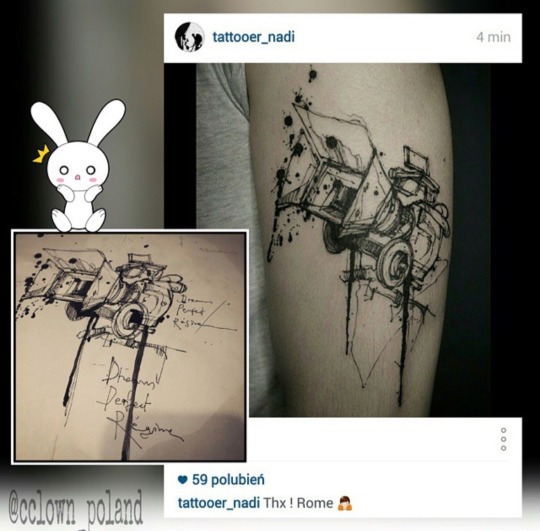
Camera
Where: left arm/biceps
Meaning: his first camera that he bought, it all started with that camera for him so that’s why he had it imprinted into him

Vision
Where: left shoulder, above the camera
Meaning: bald guy (ian) looking into his own brain seeing it is limitless; it’s fitted into a picture frame/clapperboard (?)

ian
Where: left biceps, below the camera
Meaning: director’s name
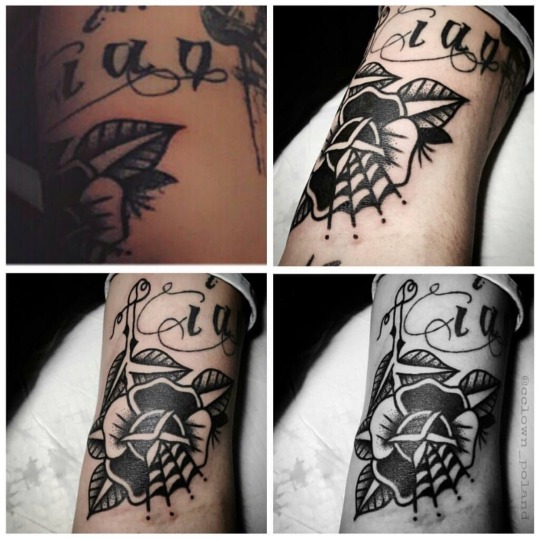
Rose with a spider’s web
Where: left inner arm, below ian
Meaning: everything beautiful comes with a price, behind the beautiful rose there’s a hidden spider
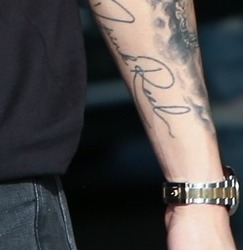
The Pink Reel
Where: left inner forearm
Meaning: DPR started as The Pink Reel (dPinkReel) but was later on rebranded into Dream Perfect Regime
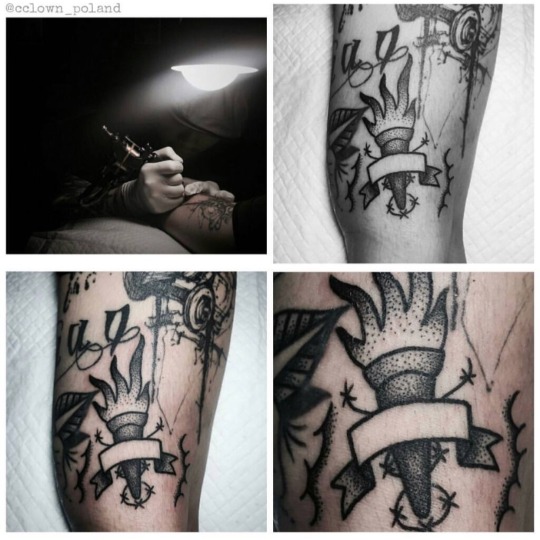
Torch
Where: left inner arm, next to the rose, under the camera
Meaning: the torch has a blank spot which he will later fill in with the initials of his firstborn
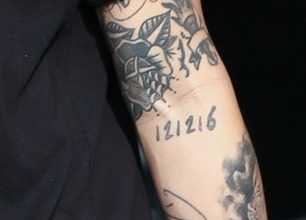
121216
Where: front of the left elbow
Meaning: -
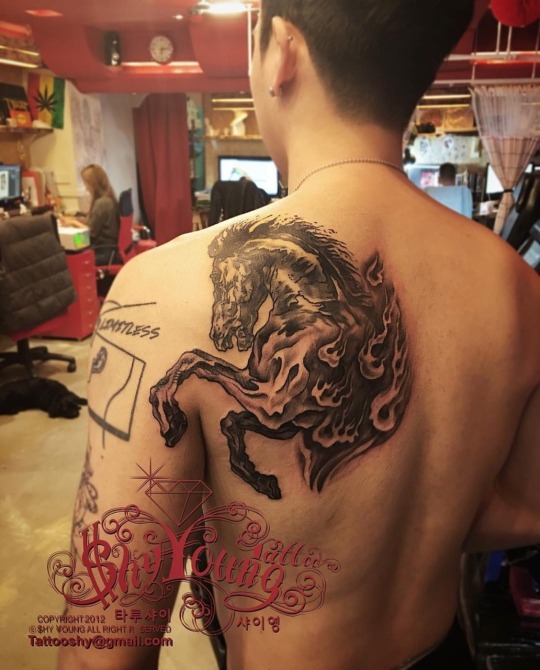
Horse
Where: left shoulder/back
Meaning: symbolizes the year he was born in but it has double meaning: dark horse, the one that rises in the end, wins
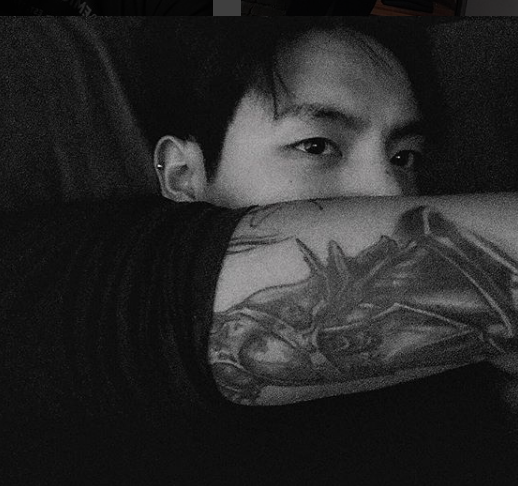
Gladiator
WHERE: left inner arm/triceps
MEANING: represents Rome

LXII.IV.III (now covered by crown)
Where: left shoulder/front/up to the collar bone
Meaning: -
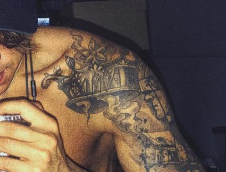
Crown
Where: left shoulder/front/up to the collar bone
Meaning: it’s cclown’s fandom name, he’ll always have a crown with him

Aphrodite/Venus in flames
Where: left front forearm/up to the wrist
Meaning: his mum’s nickname is Aphrodite plus he wanted to keep his tattooes in “Roman vibe” since his nickname is Rome
credit to: cclown_poland, soo.pia
with some addition
3K notes
·
View notes
Video
*small inhale* for people that are calling me a skinny legend i do not know what that means, um .. i guess thats referring to being skinny and ..being a legend at being skinny(?) SO*runs tongue along top lip*uh thats not gonna last very long im gonna start working out *patient sigh* *vigorously pulls camera closer to face*BUT u cant call me like .. muscly legend then *cute exhalation leading to giggle*
7K notes
·
View notes
Text
I’m laughing way too hard at this oh my fucking god CHRISTIAN
437 notes
·
View notes
Text
Interview As Your Character

– The idea of this game is to answer these 20 questions in character in order to develop aspects of your character that are difficult to flesh out in other ways. Have fun with it and be creative, but remember to stay in character. It’s a fun little writing/development/immersion exercise that really pays off. Enjoy!
How do you like to spend your free time?
What is your relationship with your immediate family members?
If you inherited a large sum of money, how would you approach handling it?
Who are you closest to in your life?
What is your most painful memory?
What is your happiest memory?
Describe your experience in an education system, if any.
What is your biggest fear and why are you so afraid of it?
To what extent do you believe in hate?
To what extent do you believe in love?
What is the number one personal rule you have for yourself?
If you saw a picture of yourself, what is the first place you would look?
How would you describe yourself?
How would others describe you?
What do you believe is your greatest weakness?
What do you believe is your greatest strength
What makes you get out of bed everyday?
What is the major challenge you face every single day?
If you could give a message to your younger self, what would it be?
What is it that you want most?
If you would like to turn this into a tag game, feel free to tag your writer friends! And if you respond to any/all of these online, please tag it with #wordsnstuff so I can check it out!
Support Wordsnstuff!
If you enjoy my blog and wish for it to continue being updated frequently and for me to continue putting my energy toward answering your questions, please consider Buying Me A Coffee.
Request Resources, Tips, Playlists, or Prompt Lists
Instagram // Twitter //Facebook //#wordsnstuff
FAQ //monthly writing challenges // Masterlist
MY CURRENT WORK IN PROGRESS (Check it out, it’s pretty cool. At least I think it is.)
2K notes
·
View notes
Text
When To Stop Planning

– A lot of asks have come in recently asking about when it’s time to stop planning and start writing and what you should know before you start the first draft vs what you should develop along the way. This is pretty much a checklist of things you should have generally figured out before you begin the first draft. Once you have the following things fleshed out, you should be pretty ready to go. There is always a point in the planning phase where you must accept that 90% of story development happens along the way and partially on accident. I hope this helps you feel more confident in starting your first draft after what I’m sure has been lots of over-planning. Happy writing!
Plot
What plot structure are you following?
What is the main conflict of your story?
Who is the protagonist?
Who or what is the antagonist?
What are the subplots in your story?
What events caused the conflict in your story?
What about the plot will interest your reader the most?
Where does the plot twist(s) occur in your story and how do they affect the it?
What is original or different about your plot that the reader has never experienced before?
What is your story, as a whole, primarily about? Family? Good vs. Evil? The change a character endures? Mirroring reality? Social commentary?
World/Setting
Where is your story taking place?
What areas or locations do the majority of your story take place in?
Is the story based on Earth, an alternate Earth, or a completely different place?
What are the rules of science/magic in your story?
What is the history of the world in your story?
What is society like in your world?
What is the government/economics like in your world?
What level of technology is there in your world?
What is the geography like?
What are some cultures/cultural aspects that will come into play during your story?
Characters
What role does the character play in your story?
What motivates your character?
What are your character’s strengths and weaknesses?
How will your character change throughout the story?
What is your character’s backstory?
How do they impact the plot?
What are their relationships with other characters?
What drives their actions?
What is in the way of them accomplishing their goals?
What Do They..
- Think they want
- Truly want
- Need
Representation/Symbolism/Theme
What are the major subtextual messages you want to get across throughout your story?
Have you created a cast of characters that represent any minorities?
What are the major symbols in your story?
How are you going to display these symbols to your audience?
How relevant are the symbols to your actual plot?
What is/are the major theme(s) in your story?
Are the themes of your story being conveyed through your setting, characters, or plot?
Is the conflict parallel with a real social issue that you’re commenting on?
How can your representation, symbolism, and theme be enhanced at this point in the writing process?
Have you run your ideas and plans by someone who could give you critiques in order to improve the representation, theme, and symbolism in your story?
I just want to emphasize that it is super important to maintain flexibility when you’re writing a fictional story. Details will change, your preference will change, characters will start to make their own choices, and you will be tempted to change things as you go. Let it happen. Be willing to let go of your past decisions if they no longer satisfy you or your narrative.
Support Wordsnstuff!
If you enjoy my blog and wish for it to continue being updated frequently and for me to continue putting my energy toward answering your questions, please consider Buying Me A Coffee.
Request Resources, Tips, Playlists, or Prompt Lists
Instagram // Twitter //Facebook //#wordsnstuff
FAQ //monthly writing challenges // Masterlist
MY CURRENT WORK IN PROGRESS (Check it out, it’s pretty cool. At least I think it is.)
4K notes
·
View notes
Text
Ways To Fit Character Development Into Your Story

– Here are some ways you can develop your characters (in little ways as well as big ones) without info dumping on your reader. This includes detailing their backstory, revealing their values and motivations, their strengths, weaknesses, relationships with other characters, and growth throughout your story. I hope this helps those of you who have expressed having trouble with this, as I have as well and creating this guide for myself and you will be very useful for all of us, I hope. Happy writing!
Backstory
First of all, only include events from a character’s past that has shaped them and will enlighten the reader on the current situation. Once you decide that this particular event is important enough to include, show it instead of tell it. Elude to backstory instead of literally plucking it out of the past and placing it in the reader’s lap.
Instead of telling the reader that your character was in an abusive relationship, show them the aftermath where your character now has their abuser’s rules engraved into their routines and the scars, physical and metaphorical, that the character has from that experience. Yes, there will be instances where you will have to come out and say it, but do it once and lightly, then let the subtext do the rest.
Core Values & Motivation
Character development is meant to be shown, not told, and therefore, your character’s values, beliefs, and motivations should reveal themselves though the character’s actions. If your character thinks that harming any living creature is the worst crime anyone can commit, then show their struggle when they’re put in a situation where they must ignore their own conscience. These moments are not only pivotal in the reader’s experience with your character, but humanize your character more than any other story element. It is the moments in which we must fight our own nature that show what our nature truly is, and it’s the same with the fictional characters you’re writing about.
Strengths & Weaknesses
In a story, the conflict will do a lot to show where your character thrives and struggles, but you cannot rely solely on the main conflict. Maybe your character is incredibly smart, but not physically strong, and is put in a situation where they must rely on an area they’re weak in and must struggle in front of the reader. It’s the same with strengths. Your character should have moments of glorious triumph phenomenal failure throughout your story. This makes them more alive, and therefore more relatable, which is important in any story.
Relationships With Other Characters
Relationships with characters should be shown through the manner in which they communicate and interact in your story. If they don’t like each other, there will most likely be some tension when they’re forced to work together and rely on one another. If they love each other, they’ll show it through affectionate gestures and sometimes their words.
Growth & Personal Development
The beginning and ending of your story doesn’t have to be a miraculous before and after, but your character should go through some sort of a personal evolution between the start and finish line. Whether that be in their self-concept, their relationship with someone else, or their views on something, they should transform, at least a little. This is just a characteristic of a rounded character, and that’s what you want.
Show their development in ways such as putting them in a similar situation they’ve been in before and have them react in a way that highlights the change that has occurred. Show them realizing themselves that they have changed and now see through a different lens. Show them interacting differently as time progresses and imparting new words of wisdom, whether they’re correct or completely misguided.
Support Wordsnstuff!
If you enjoy my blog and wish for it to continue being updated frequently and for me to continue putting my energy toward answering your questions, please consider Buying Me A Coffee.
Request Resources, Tips, Playlists, or Prompt Lists
Instagram // Twitter //Facebook //#wordsnstuff
FAQ //monthly writing challenges // Masterlist
2K notes
·
View notes
Note
Do you have any tips on how to make sure your character stays consistent throughout the book? (especially for a newbie)
Get to know your characters really well before you even start the first draft. It’s a time commitment, but it’s well worth it. If you write the story with an already solid knowledge of who your character is, how they present themselves, what their motivations are, and how they change over the course of the plot, you’ll have a much easier time keeping the character portrayal consistent, as well as interesting.
I have a couple articles that will help with your character development in the planning/outlining stages of your story:
Ways To Fit Character Development Into your Story
When To Stop Planning
Character Trait Form
Tips On Introducing Characters
Tip On Giving Characters Flaws
As well as some master posts of resources:
Resources For Creating Characters
Resources For Describing Characters
Questions I’ve answered:
Having Trouble Connecting To Your Characters?
Giving Characters Bad Traits
On Making Scenes/Characters Unpredictable
Showing Vs. Telling And Characters
Keeping Characters From Sounding Identical
And finally, some prompt lists to inspire you:
31 Days Of Character Development: Wordsnstuff May Writing Challenge
Interview As Your Character
7K notes
·
View notes
Note
I have my story pretty planned out, with a clear outline and subplots, but i'm struggling with plotting the 'romance' part of the story. The two protagonists know and like each other from the start, but i have no idea how to make them transition from the 'mutual crush (oblivious to each other)' state to the 'no longer oblivious/dating' state (neither of them are the type to confess their feelings dramatically). Do you have any advice for getting characters together without it feeling too sudden?
Is either of them the type to express their feelings bluntly?
Does anything like a potential move or romantic rival impose a time limit on their confessions?
Are their friends tired of them avoiding the subject and just kinda push them at each other one day?
Is there a harrowing situation that brings them together by the end because they're too exhausted to pretend anymore?
Do circumstances cause one of them to confess a sad or dark secret to the other and stir up emotions?
In the vein of many a story, do they go to a bar and have to defend the other from unwanted advances? Fake dating? Bed sharing? Suddenly have to care for a child together (even if only for an hour)?
Sometimes someone just has to be the first to say "I love you," maybe while watching the other doing somehing that's so them. Or, a dozen little things in a day that make one realize the other loves them back. Heck, I had a character just drunkenly hit on his crush after a party, surprising everyone because she didn't seem like his type. There are as many ways to jumpstart a romance as there are to end one. Make a list of possibilities and decide which one best fits your characters.
63 notes
·
View notes
Text
5 Better Ways to End Your Story
1. The Dialogue Gut-Punch
I usually imagine this ending happening after some great, destructive plot twist or long-kept secret has been revealed to the narrator and/or reader. There is shock and awe and maybe some betrayal. This is where you fully feel the effects of what has changed, the beginning versus the end. And in this case, the end is not ideal.
Maybe the resolution’s scene has been set, but that’s not offering enough closure. How to tie up the loose end? A short (and I mean short) piece of dialogue. It usually involves a sense of resolve and acceptance, even if the resolution at hand is otherwise displeasing or harrowing. The gut-punch comes from that acceptance, that acknowledgment of what has been lost in the quest to fulfill their goals. Doesn’t always mean defeat or a pyrrhic victory, but all protagonists must lose things while trying to gain others. This is where that character and the reader feel the loss in the wake of a resolution.
2. A Question and an Answer
This is a lot like #1, only there’s a different setup. Instead of a scene being laid out and then one line of dialogue, there are three components. The scene is set, a question is asked, then an answer is provided. The end. The question and answer usually revolve around the reflection of what has changed. A “what now?” for all intents and purposes. Can be used for a mysterious ending to a standalone or a setup for the next installment in a series.
It is worth noting that the answer does not always have to be dialogue. For example, a character could ask: “So this is what we have left?” and then a (brief) description is given of a ragtag crew that’s survived the whole story. Play around with it.
3. The Full Circle
Keep reading
9K notes
·
View notes
Text
How I Plan...
Building a story or series from the ground up with the help of templates!
This is how I approach planning. It covers what I do up to the point of opening a blank document and typing the first word.
Despite the tags this isn’t going to be ‘how to’ or advice based because who am I to tell you how to plan a story? This is only an option:) I engourage you to steal liberally but also question whether or not this method will work for you. If you don’t vibe with something, throw it out!

*you don’t have to answer these questions in order.
STRUCTURE LEVEL
Genre/Sub-genres: Picking a genre can help you find ideas/tropes faster. If you’ve written or read a book before you probably know the types of stories you like.
Age Category: This can help you find themes for you story. I like to sepate genre and cataegory since you can have a young adult or an adult romance.
Point Of View: Pick who will tell the story. Will there be more than one?
Tense: First, second or third person? Past or present?
Formatting: How will the story be split up? Through chapters or parts. I also like to put whether or not I’ll have a playlist, any quotes or epigraphs, prologues or epilogues, anything like that.
Tone: Will your story be serious, light hearted, sad, satirical...etc
Atmosphere/Color palette: I like to use this for when I’m writing description. Using specificities to elevate your writing can bring a world together and make it feel real.
Overall Concept: As vague as you’d like it to be! I usually give a few sentences.
Comparison Titles: I love to use comparison titles in the beginning when nothing has been solidified. It helps me know what came before me while still generating lots of inspiration.
SERIES LEVEL
Series Title: I usually base it off the first books title or a significant thing that links all the stories together.
Number of stories you want: I don’t always know how many stories will be in a series but it’s good to have a rough esimate of how many you’d like to write.
Number of stories realistically achievable: But we all know that sometimes an idea just isn’t sustainable for a 10 book series but works rather well as a trilogy instead.
Story that will kick off the series: All of your stories should fit a purpose in the series but this book will take the roll as a set-up (not to be confused as ‘filler’) for the rest of your series. It’s just something to have in mind when planning. This way you can plant twists and foreshadowing for the rest of the books.
Story that will close out the series: This story has big shoes to fill since you’ve probably been amping everything up to an explosive finish but at the end of the day it doesn’t matter if it’s bigger and better than what came before, it only matters if it’s a satisfying close to the whole series.
Summarize each story
Story # 1 summary ...you get the idea
Timeline: I like to know what year the series starts and when it will end. It might sound complicated but it’s so helpful. You don’t want a character to be pregnant or something for three books if the the stories have spanned more than nine months.
Spin-offs: You might find that you’ve got some ideas that don’t quite fit in with the others but they have some common elements. A spin-off is a cool way to explore those other ideas.
Naming conventions: I like to name my individual stories similar things to keep a theme. Example: J. R. Wards Black Dagger Brotherhood series has book titles with the word ‘Lover’ in them. There’s also naming conventions like the ACOTAR series by Sarah J. Maas that go “A Court of Blank and Blank”
SETTING LEVEL
Town/City/Village Name:
Area Description:
State/Province:
Country:
Common Weather:
Population:
Popular Figures:
Popular Locations:
Historical Background and Events:
What might the town be hiding to the average passer-by?
*You can definitely add more questions depending on your story. I write mostly within our world but I do like to create fictional towns.
CHARACTER LEVEL
Full Name:
Age:
Role:
Title/Rank/Occupation:
Wants:
Fears:
Misbelief:
Description/Faceclaim:
Personality Traits:
Zodiac Sign:
MBTI:
Theme Song:
Backstory:
Daily Life:
* Again, you can add any more questions you’d like to. These are just the ones I like to use to get going. Some of them are super vague, so in Daily Life I’ll put their living arrangement, transportation, pets or anything like that. I also add loads of stuff in their Description such as sexuality, how they dress, tattoos or scars, etc.
GROUP
*this is for anything like a fictional club, cult, company, evil organization or something like that.
Name:
Sub-divisions:
Type:
Founder:
History:
Current Leader:
Headquarters:
Current Operation:
Biggest Threat:
Biggest Allies:
Council Members (include roles):
Other Members (include roles):
STORY LEVEL
Working Title: Sometimes I use something concrete but if I need to get it out of the way I’ll put something like Project Black.
Estimated Length: Word or chapter count you’d like to achieve.
Order: Which book in the series is it?
Premise: I like to refer to this as the summary’s skeleton.
Tropes:
Subplot(s):
Story Summary:
Story Theme Song: This is just for fun but sometimes it really helps me capture what the whole story might be. I can also use it when I’m low on inspiration.
BEAT LEVEL
* I’d recommend googling an explanation of story beats or purchasing Blake Snyder or Jessica Brody’s book on Save The Cat beat sheet. But on the other hand, you don’t have to use a beat sheet at all. And if at any point during planning you feel like you’re ready to write then go for it!
Opening Image: An image that catapults your audience into the look and feel of your story
Theme Stated: Typically the theme of the story is communicated by someone fairly early on. This is dialogue spoken to the protagonist that he doesn’t quite grasp yet.
Set-Up: Show the protagonist in their “old world.” Let the audience know what the status quo is for them, then hint at the adventure that follows. This is also a time to introduce secondary characters.
Catalyst: Sometimes called the “inciting incident,” the catalyst is the event that disrupts your protagonist’s status quo. But they’re not ready to make the choice that catapults them into the story just yet.
Debate: This is where the protagonist has doubts about setting out on their perilous journey.
Break into Two: Inevitably, your protagonist will overcome their doubt and make a choice to set out on their adventure. This is the choice that sets the plot in motion. Your beat sheet will be filled with obstacles and twists resulting from making this choice from here on out.
B Story: A subplot ensues. Some would say that this is usually a romantic subplot.
Fun and Games: Plot structure requires a stretch where your protagonist wields their new power, and does cool stuff with it. I’ve also heard this referred to as the Promise of The Premise. So in Hunger Games by Susanne Collins this would be Katniss actually fighting in the games.
Midpoint: At some point, your protagonist will either get what they’re after... or not. But there will be consequences either way.
Bad Guys Close In: After your protagonist gets what they want, or not, there will be consequences. These forces will tighten their grasp, and throw the protagonist off balance.
All Is Lost: The dire circumstances your protagonist endures will lead to an inevitable loss. Which can be anything but it most commonly a character death.
Dark Night of the Soul: At this point of the Save the Cat beat sheet template, your protagonist has lost hope.
Break into Three: In plot structure, this is where your protagonist claws around in the darkness, only to find or remember something useful.
Finale: Treat the finale as the Act 3 summary. The Save the Cat beat sheet template is at its end, so it’s time for the protagonist to take on their foes. Armed with new tools and self-discoveries, the protagonist often synthesizes what they've learned (in Act 2) with values they've always had (Act 1).
Final Image: Along with the opening image, the final image creates the bookend that encapsulates the journey. This is the last thing the audience is left with.
*Closing thoughts: I have never used just a beat sheet because they don’t resonate with me for every story. I always add stuff or take away. I think there is a special beat missing between the Finale and Final image and that is where the characters slow down, take a breath and reflect on everything they’ve experienced. I also think Romance is the hardest genre to use the beat sheet with but I do a hybrid of the Beat Sheet from Save The Cat Writes A Novel! By Jessica Brody and Romancing the Beat by Gwen Hayes for the most part.
NOW JUST WRITE! :)
I hope this was helpful in some way or another! DM me or reply with any questions or for clarification. I have many more posts I’d like to create (on my process) but if you have any ideas or topics I should make posts on let me know.
Good luck and happy writing!
2K notes
·
View notes
Text
Creating plots with the zigzag method
I’ve learned this method years ago and I’ve been using it ever since. The zigzag plot creator starts like this:

An crescent zigzag.
You can have as many up and downs as you want. I’ve drawn six to keep it simple. Alright, this zigzag is your storyline and every corner is an important event that will change everything:
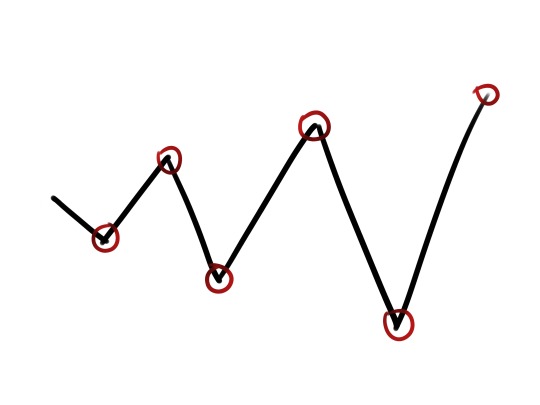
Every down represents a bad thing happening to your main characters, taking them further away from their goal. Every up is a good event, taking them closer to their goal:

So, when the zigzag goes down, something bad must happen. When the zigzag goes up, something good must happen. The reason why we drew a crescent zigzag is because every down must be worse than the previous, and every up must be better than the previous. As the zigzag advances, events become more serious and relevant.

Let’s apply the zigzag method. My storyline is a detective trying to catch a serial killer in a futuristic city. Minutes later, this is what I’ve got:
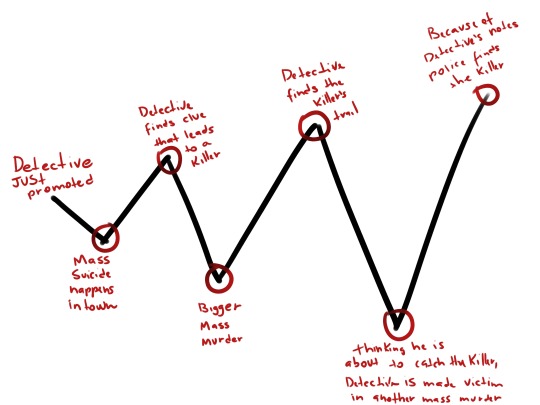
Start: Detective, our protagonist, is just promoted
Down #1: Mass suicide happens in town, detective gets the case, the whole town thinks it might have been a religious suicide act, but detective suspects that someone single-handed killed all those people
Up #1: Detective finds clue about a possible killer
Down #2: A bigger mass murder happens, a true massacre, it’s a definitely a murder
Up #2: Detective finds the killer’s trail
Down #3: Thinking he is ahead of time, close to catching the killer, detective ends up dead in another mass murder
Up #3: Because of his notes and discoveries, the police is able to find the killer before they leave town
From this point on you can play with zigzag as much as you want. For example, changing the orientation of the zigzag for a bad ending:

Lots of ups and downs:
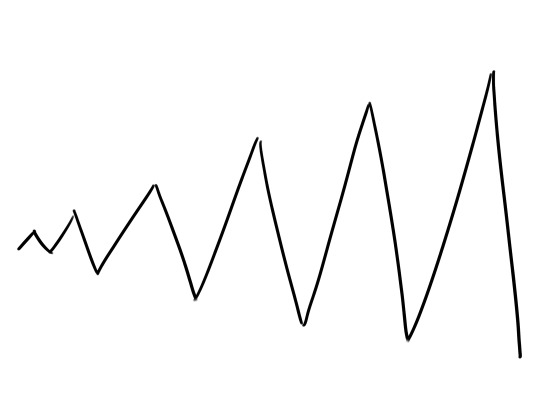
Or just a few:

It’s up to you (see what I did there?).
You can plot any type of story with the zigzag method. It’s a visual and easy process for a very complex task.
20K notes
·
View notes
Text
reblog if you’re currently writing a book or if you someday hope to write a book.
35K notes
·
View notes
Text
me, daydreaming: stop - there’s a plot hole
me: whatever, it doesn’t matter, nobody’s gonna see it
me: mmm-buuuut-mmmm-plOT HOLE sToP
10K notes
·
View notes















